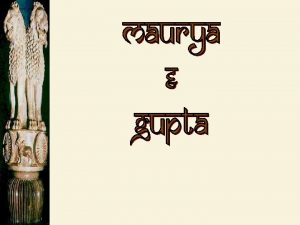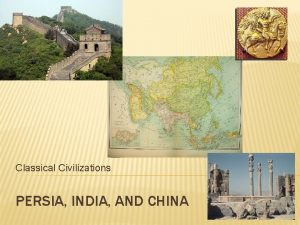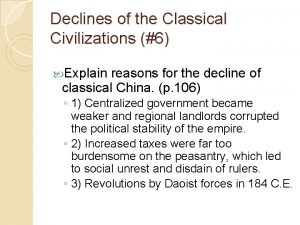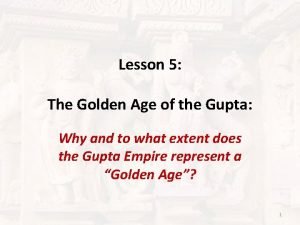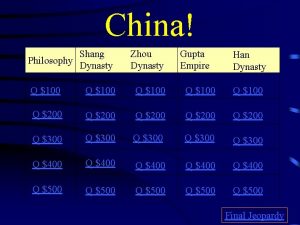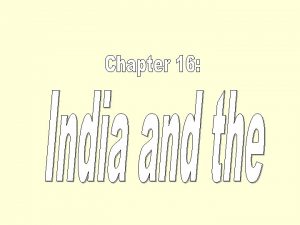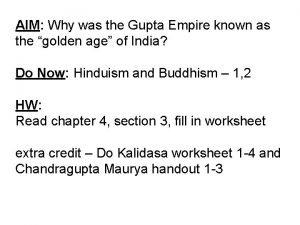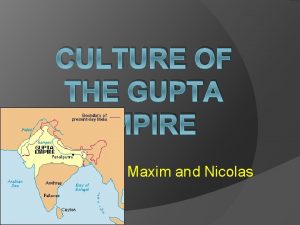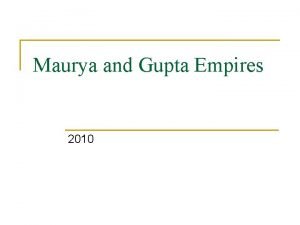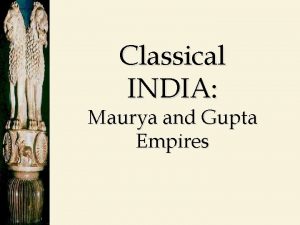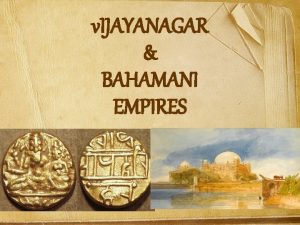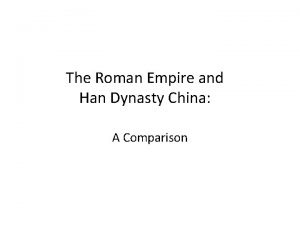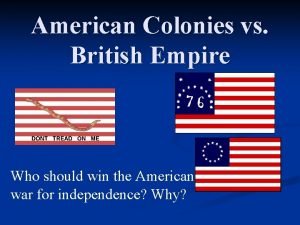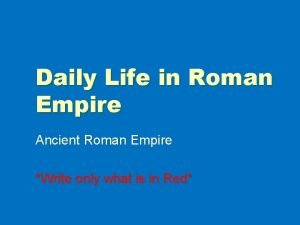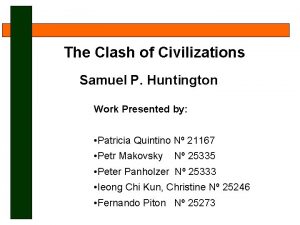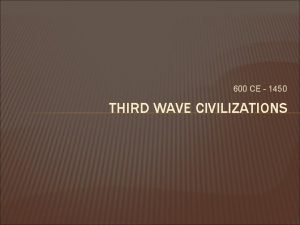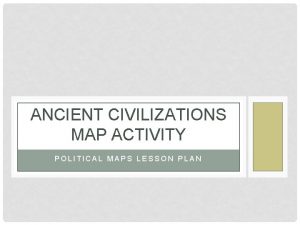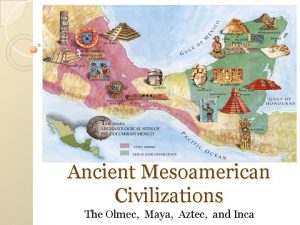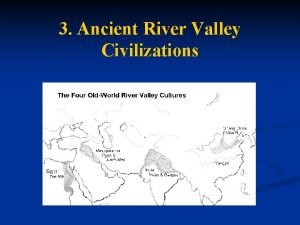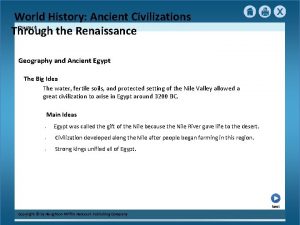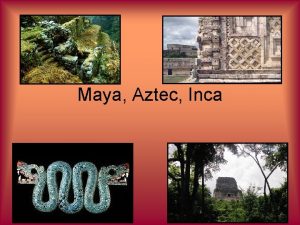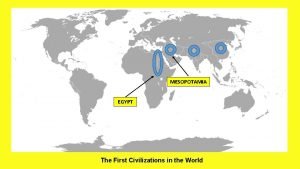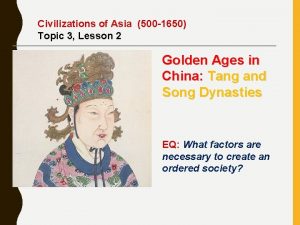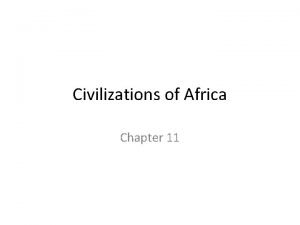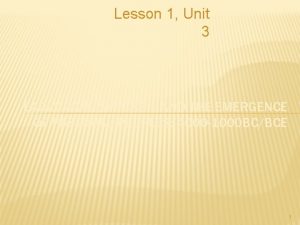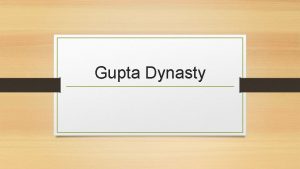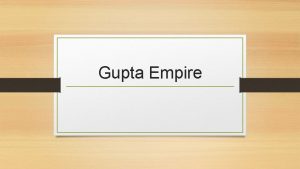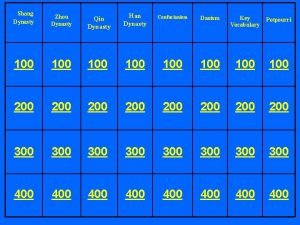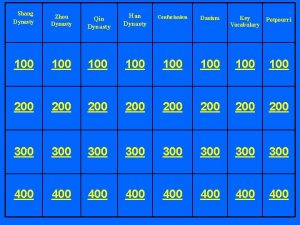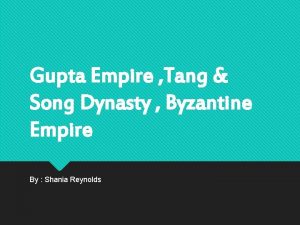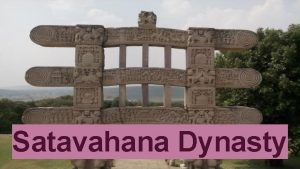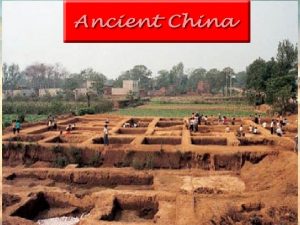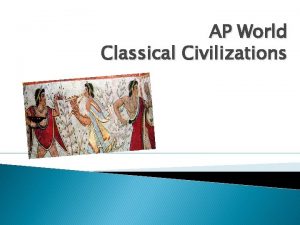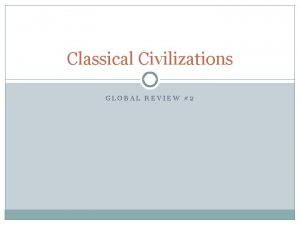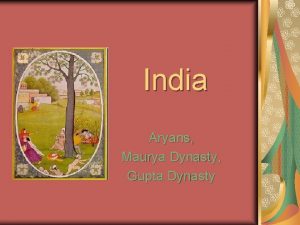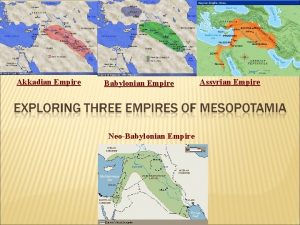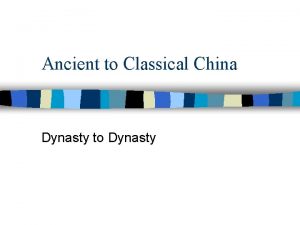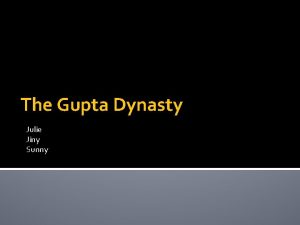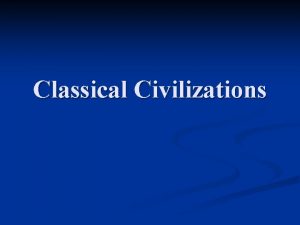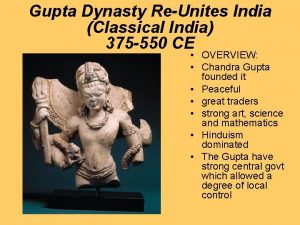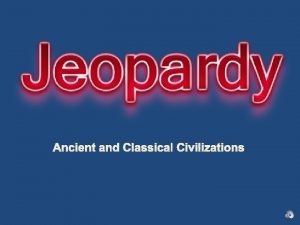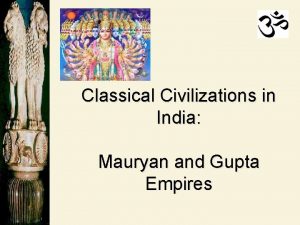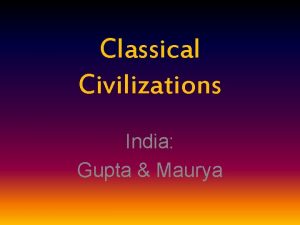Classical Civilizations The Gupta Empire Gupta Dynasty In

































- Slides: 33

Classical Civilizations

The Gupta Empire Ø Gupta Dynasty: In India about 500 years after the rule of the Maurya dynasty. Ø Untouchables: Outcasts in the Gupta Empire. Lived harsh lives, given jobs considered impure.

Characteristics of Government Ø Efficient central government, allowed farming and trade to prosper. Ø Central government gave power to local leaders.

Hinduism and the Caste System Ø 4 Basic castes. Ø People believed Karma determined class. Ø Untouchables were outcasts.

Contributions Ø Math: l l Concept of zero. Decimal System. Ø Medicine: l l Used herbs and other remedies to treat illnesses. Surgeons set bones and repaired facial injuries.

China: Tang and Song Dynasty Ø Tang Dynasty: Ruled China from 618 to 907. Ø Song Dynasty: Ruled China from 960 to 1279. Ø Gentry: Wealthy landowners who wanted education over physical labor. Ø Calligraphy: Fine handwriting.

What was the guiding principle of Chinese government? Ø People who wanted to hold office had to pass a difficult exam that emphasized Confucian philosophy. Ø Led to a highly educated ruling class.

Achievements of Tang and Song Ø Government: l Used civil service to create a highly educated upper ruling class.

Ø Economy: l Expanded trade, built canals, created world’s 1 st paper currency.

Ø Art: l l l Calligraphy. Porcelain. Pagoda: Temple with a roof curved on the corners.

How did China influence Japan? Ø Japan began to blend Chinese with their own culture. Ø Japanese nobles adopted Chinese language, food, style of dress, ceremony, dance and garden.

Byzantine Empire and Russia Justinian: Leader of the Byzantines at its peak from 527 to 565. Ø Justinian’s Code: Code of law set up by Justinian. Ø Icon: Holy images of Jesus, Mary and saints in the orthodox church. Ø Schism: Split between the Orthodox Christian Church in the East and the Roman Catholic Church in the East. Ø Czar: Autocratic rulers in Russia. Ø

Geographic Setting Ø Capital City: Constantinople. Ø Justinian’s Code is important because: l It was a body of civil laws used as a basis for international law today.

Orthodox Christian Church Ø Split because: l l Priests could marry. Greek was the language.

Byzantine Empire affect Russia in the following areas: Ø Language: Gave Russia a written language. Adapted the Greek alphabet. Ø Religion: Carried Russian Orthodox Christianity. Became the basis for Russian government and religion. Ø Government: Autocratic rule. Czars. Ø Art and Architecture: Transformed into onion domes.

Islamic Civilization Ø Describe the division in Islam. l l Sunnis: Caliph chosen by Muslim leaders. Shiites: Only the descendants of the prophet Muhammad should be his successors.

Islamic Achievements Math: Algebra, Developed astronomical tables, measured the earth’s circumference within a few thousand feet. Ø Art: Calligraphy, mosques and palace walls had elaborate art with abstract geometric patterns. Ø Medicine: Pass a test before practicing, set up hospitals. Ø Economics: Trade, manufacturing. (steel swords, leather goods, carpets, fruits and vegetables. ) Ø

Medieval Europe and the Crusades Ø Medieval: Middle Ages 500 to mid 1400 s. Ø Chivalry: Code of Conduct knights were bound by. Ø Manorialism: Economic system structured around the lord’s manor or estate. Ø Serfs: Peasants who lived on the estate. Ø Excommunicate: Excluded from the Catholic Church.

Why did the feudal system develop? Ø Because kings in the early middle ages were too weak too keep invaders out, so people banded together for protection.

Create a chart of the feudal system Kings Lords Lesser Lords Knights Peasants and Townspeople

Why does the term mutual responsibility best describe the feudal system? Ø In order for a manor to be successful and survive, each person/group had responsibilities.

Why does the term self-sufficient best describe manorialism? Ø Everything needed for survival was on/near the manor. Ø They didn’t rely on others.

Why was the Church the most powerful institution during the Middle Ages? Ø It stabilized Western Europe, provided worldly leadership and preserved and revived learning.

Describe the manor system and how it provided for the basic needs of people. Ø Serfs worked the land for the lords, lords gave the peasants several acres of land to farm, lord would protect the serfs in times of war.

What were the secular powers of the church? Ø Economic: 10% of income. Ø Political: Own laws. Could excommunicate people.

Describe the relationship between religion and art in medieval Europe. Ø Focused on glorifying God. Ø Reflection of the Church’s power.

Contributions of Medieval Europe Ø Literature: stories of knights, feudal lords and common people. Ø Art and architecture: Stone churches, stained glass windows.

The Crusades: religious war between Muslims and Christians to drive the Muslims out of the Holy Land (200 years). Ø Urban II: Pope who called for the Crusades. Ø Council of Clermont: Where Pope urban asked French and German bishops to recapture the Holy Land. Ø Holy Land: Palestine. Ø Saladin: Muslim leader who united them in 1100 s. Ø

List the reasons for the Crusades Ø 1. Pope believed Crusades would expand his power in Europe. Ø 2. Christians believed their sins would be forgiven if they participated. Ø 3. Nobles hoped to gain wealth and land. Ø 4. Some saw it as a chance for travel and excitement. Ø 5. Serfs hoped to escape feudal oppression.

Impact the Crusades had on Medieval life. Ø Global Economy: l l Trade was increased as Europeans became interested in Eastern products. Ships were built, allowing trade routes to be developed.

Ø European interest in learning: l l Gained a broader outlook. (Interest in other cultures). Were introduced to new ideas they wanted to learn about.

Ø Christian Church: l l Temporarily increased the pope’s power, eventually decreased it. Split between East and West churches.

How the Crusades affect the feudal system. Ø 1. Gave monarchs more power. Ø 2. Institution of Feudalism weakened. Ø 3. Economy based on money, not land began.
 Venn diagram of mauryan and gupta empires
Venn diagram of mauryan and gupta empires Chapter 26 civilizations in crisis the ottoman empire
Chapter 26 civilizations in crisis the ottoman empire What is it
What is it What caused the decline of classical civilizations
What caused the decline of classical civilizations Chronology of gupta dynasty
Chronology of gupta dynasty 647 ce
647 ce Ancient india unit test
Ancient india unit test Gupta empire philosophy
Gupta empire philosophy Fall of gupta empire
Fall of gupta empire Astronomy gupta empire
Astronomy gupta empire Gupta empire trade routes
Gupta empire trade routes What is gupta empire known for
What is gupta empire known for Mauryan and gupta empire map
Mauryan and gupta empire map Gupta empire social classes
Gupta empire social classes Dynasty of vijayanagara empire
Dynasty of vijayanagara empire Roman empire china
Roman empire china Battle of talas river
Battle of talas river Difference between empire and dynasty
Difference between empire and dynasty American empire vs british empire
American empire vs british empire Life in the roman empire
Life in the roman empire Clash of civilizations huntington
Clash of civilizations huntington Third wave civilizations time period
Third wave civilizations time period World civilizations the global experience 7th edition
World civilizations the global experience 7th edition Political map activity
Political map activity Olmec maya aztec inca timeline
Olmec maya aztec inca timeline 4 river valley civilizations
4 river valley civilizations World history ancient civilizations through the renaissance
World history ancient civilizations through the renaissance Aztecs incas mayans map
Aztecs incas mayans map First civilizations
First civilizations River valley civilizations vocabulary
River valley civilizations vocabulary Topic 3 review questions civilizations of asia answers
Topic 3 review questions civilizations of asia answers Chapter 11 section 1 early civilizations of africa
Chapter 11 section 1 early civilizations of africa Chapter 9 lesson 1 ancient india
Chapter 9 lesson 1 ancient india Lesson 1 early civilizations
Lesson 1 early civilizations
